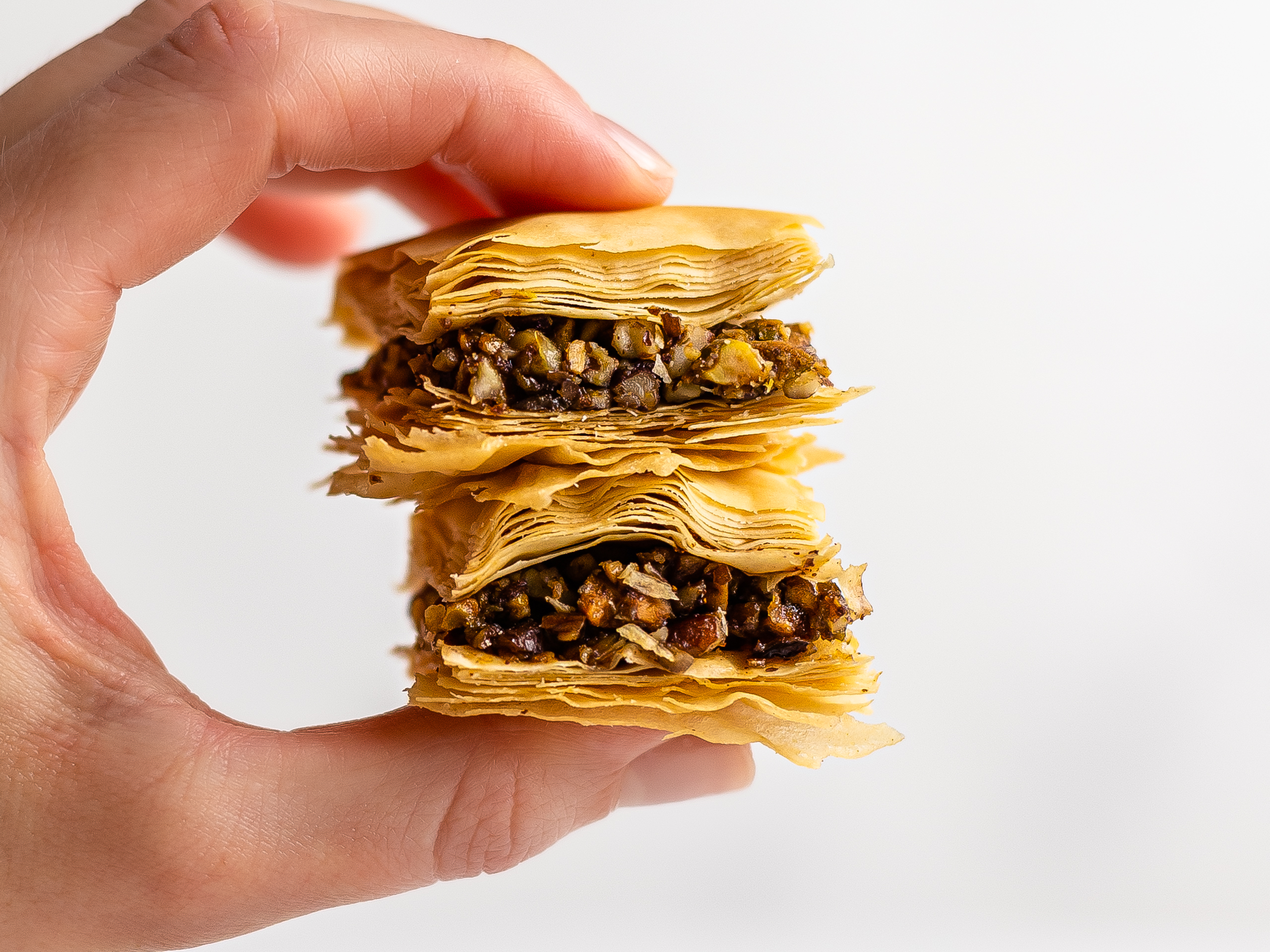Baklava is a tasty Middle-Eastern treat consisting of layers of crispy phyllo(filo) pastry and a heart of crunchy nuts, all glazed in a sticky syrup. As good as that sounds, the traditional recipe uses a shocking amount of butter and sugar. That makes the treat not suitable for anyone on a diet, and also not vegan. Let's try to improve that.
Below we will make vegan Lebanese baklava with no butter and no honey.
But first, what's special about Lebanese baklava? This variation is our favourite because it uses rose water for extra flavour. Rose water is an essence made from water and rose petals. It smells and tastes fantastic and plays so well with the nuts and the syrup in the baklava.
To make vegan and healthier baklava, we replaced butter with oil and white sugar syrup with maple syrup. Maple syrup has around 30% less sugar than white sugar, contributing to a better nutritional profile for this recipe.
Even though we made good progress and improved the traditional baklava's nutritional profile, we gave this recipe "1 out of 3 hearts". One heart on Foodaciously stands for "indulgent", which means you should enjoy that food in moderation and sporadically.
If you limit yourself to one or two squares of this dessert every other day, you can enjoy the amazing flavour of Lebanese baklava without worries. In fact, two squares of our baklava are just around 200 calories and 14% of your sugar RDI. Perfectly acceptable, and much better than most other desserts.
NOTE: The default ingredients yield about 40 squares and one serving consists of two pieces. You can adjust the servings below to fit the needs of your household.
Ingredients
| Pistachios | 120 g |
| Pecans | 120 g |
| Filo Pastry Sheets | 400 g |
| Canola Oil | 100 mL |
| Maple Syrup | 360 mL |
| Rose Water | 4 tsp |
| Ground Cinnamon | 1 tsp |
Step 1
Add the pistachios and pecans to a food processor and pulse them in short bursts to get finely chopped nuts (1). Alternatively, you can chop them with a knife.
Next, transfer the nuts to a bowl and pour in 40 mL of maple. Give all a good mix until the nuts are nicely coated in syrup (2).
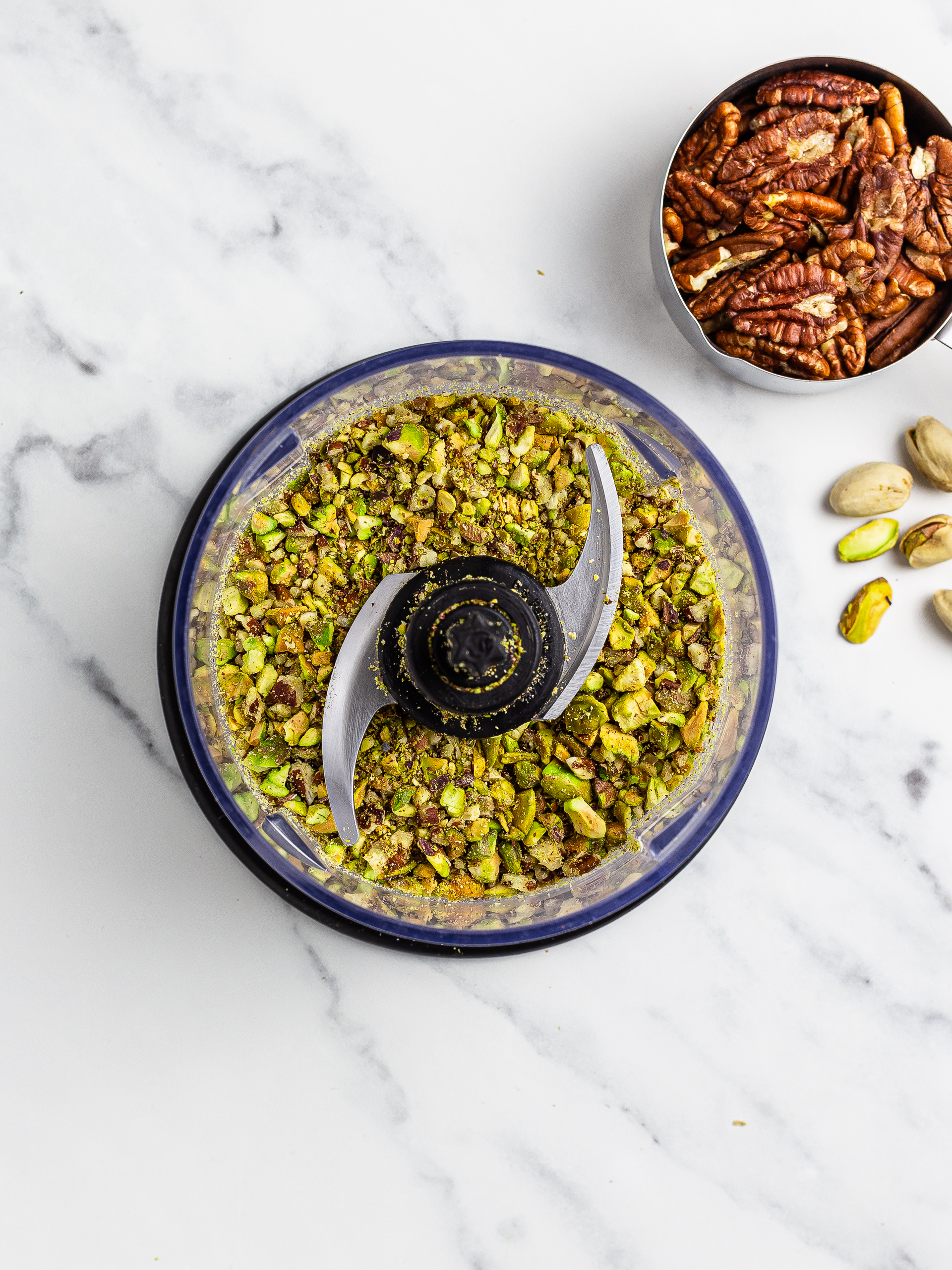
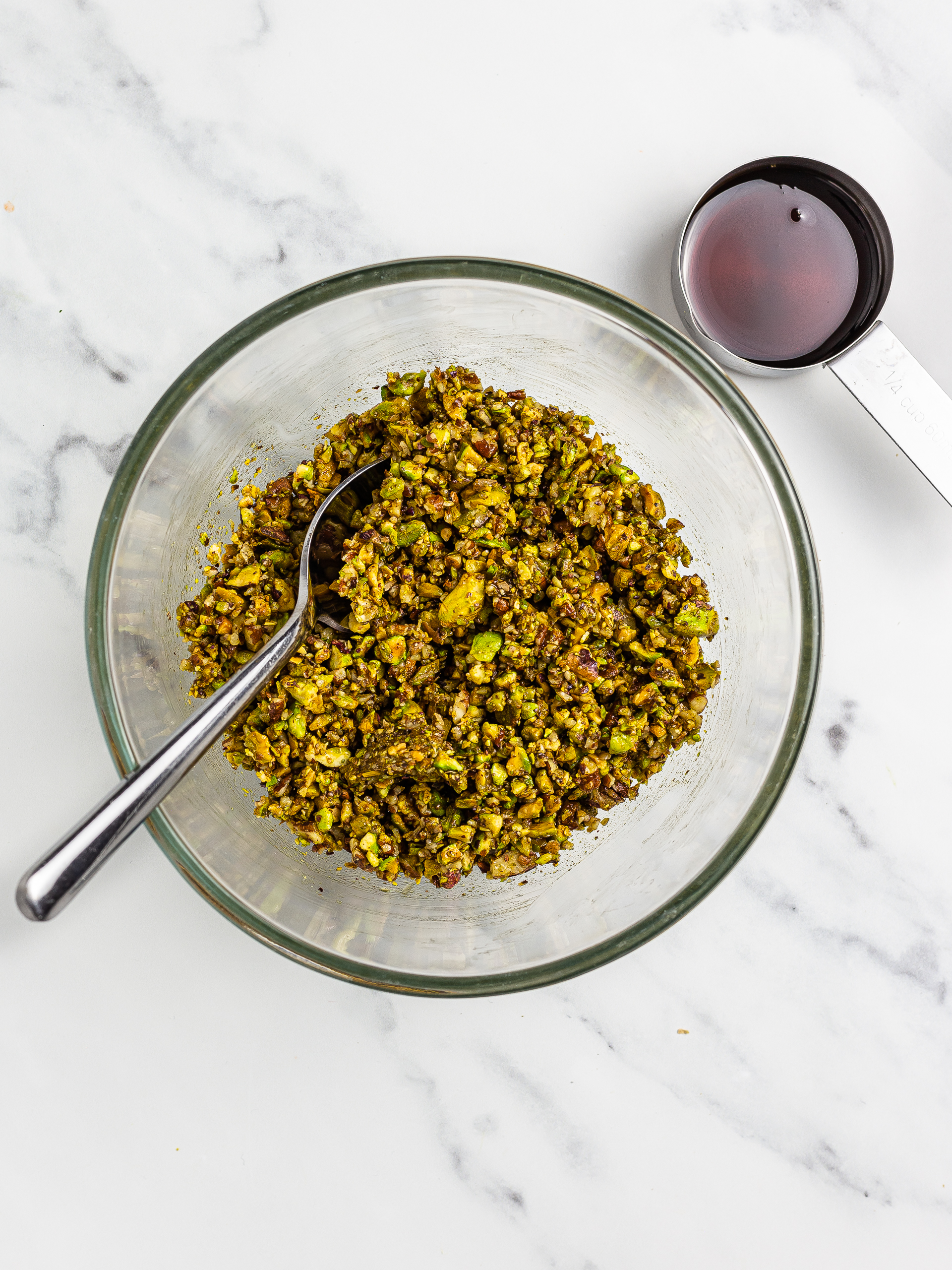
Step 2
Now, grease a baking tray with vegetable oil. We used a rectangular 32 by 20 cm (12 by 7.8 inches) tray.
Unroll the filo pastry sheets from their packaging and check if they fit your baking tray. If they're too big, then cut them to size.
Next, take half of the sheets and keep the other half aside wrapped in cling film.
Then, put one pastry sheet in the tray and brush the entire surface with canola oil (1). Then, layer another one on top and brush again (2).
Keep layering the pastry sheets until you have used all this first half. Aim to have from 10 to 16 layers of filo pastry.
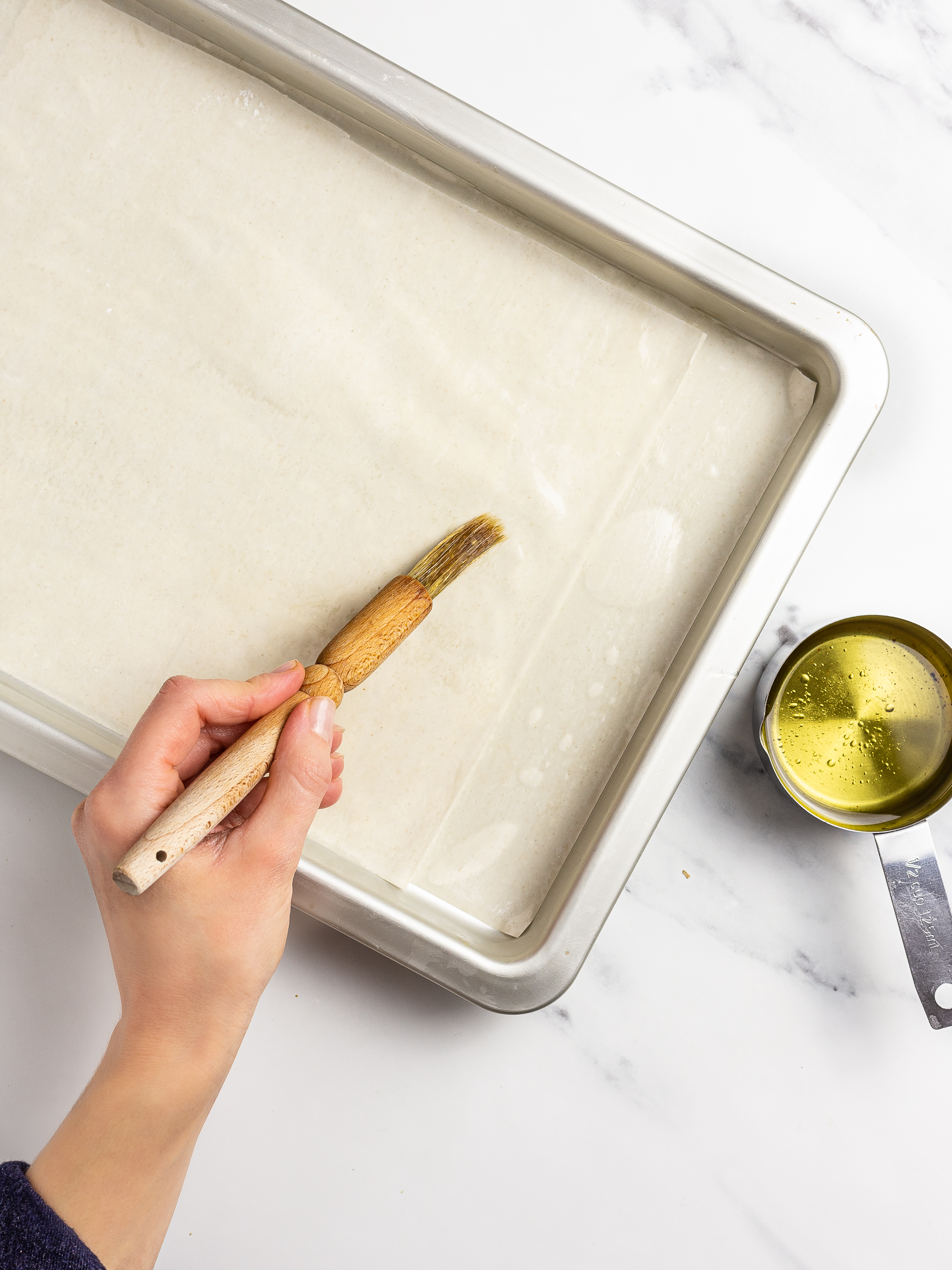
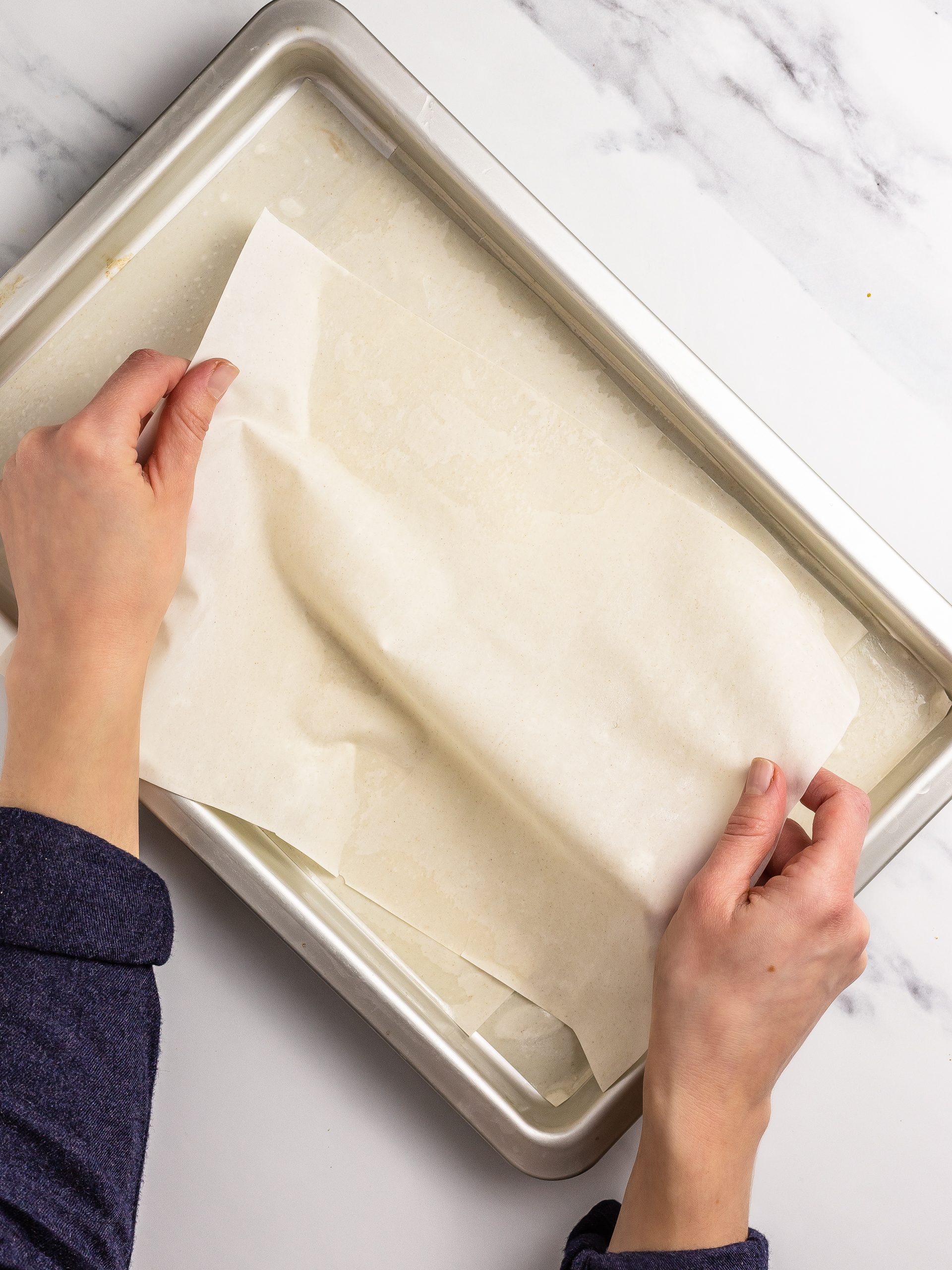
Step 3
Next, spread the pistachio mixture over the pastry with the help of a spatula, covering the entire surface (1).
Take the second half of filo sheets and repeat the layering and oiling process as you did in step 2 until you have used all the pastry (2).
Then, brush the top layer with any remaining oil.
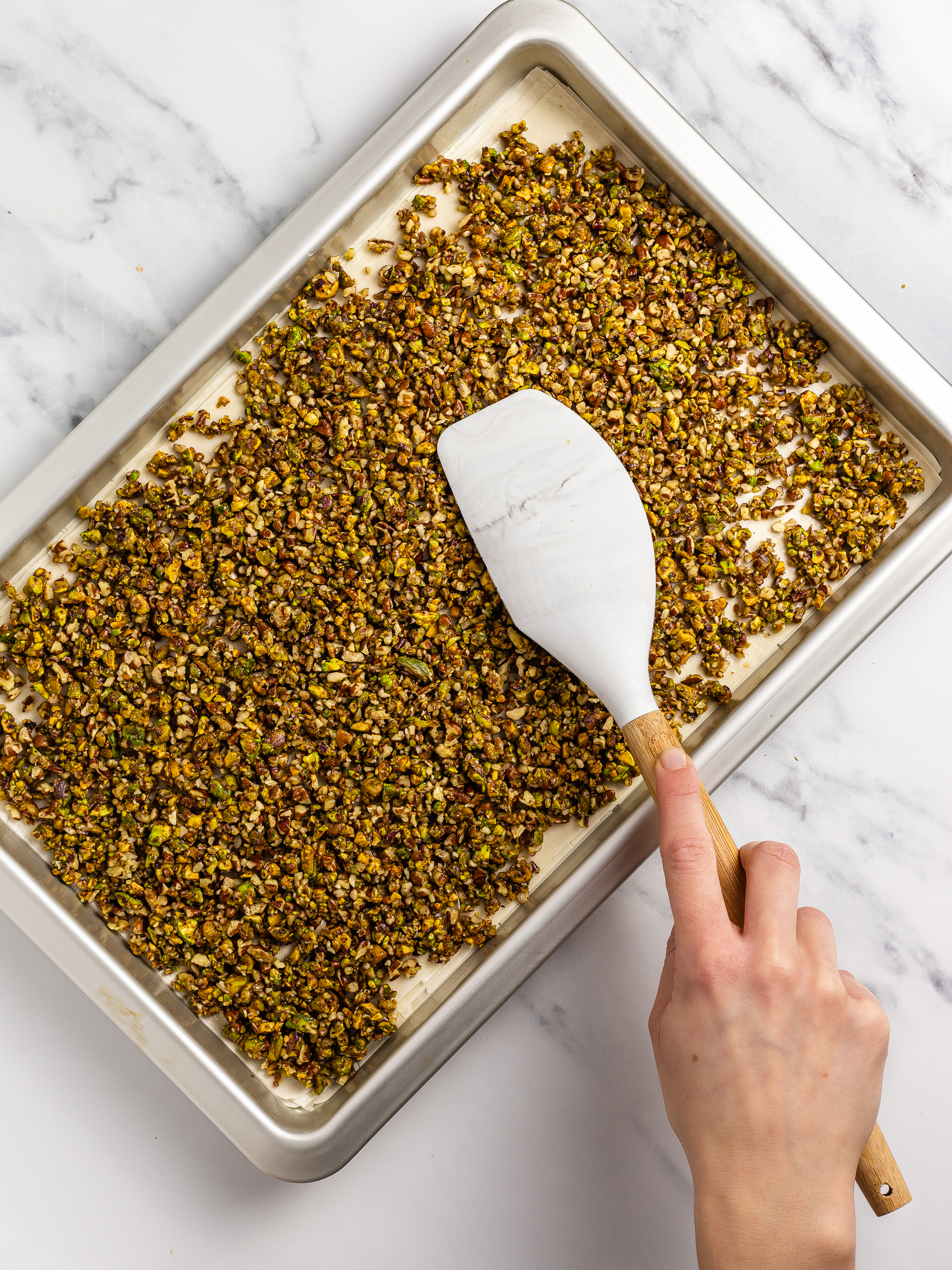
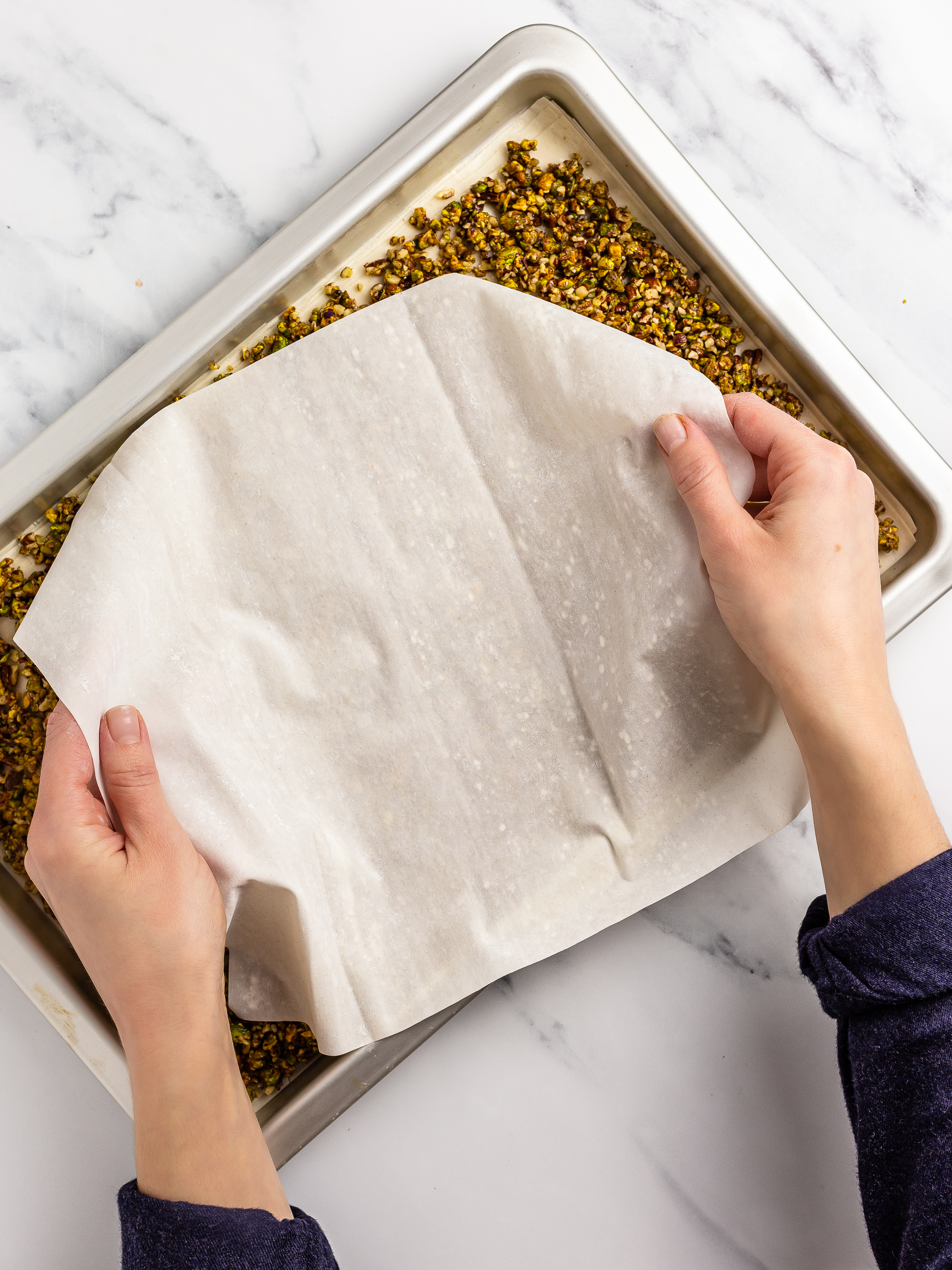
Step 4
Using a sharp knife, cut deep lines in the assembled pastry.
You can make bite-sized squares, rectangles, or diamond shapes. We cut ours into 4 by 4 cm (1.5 by 1.5 inches) squares.
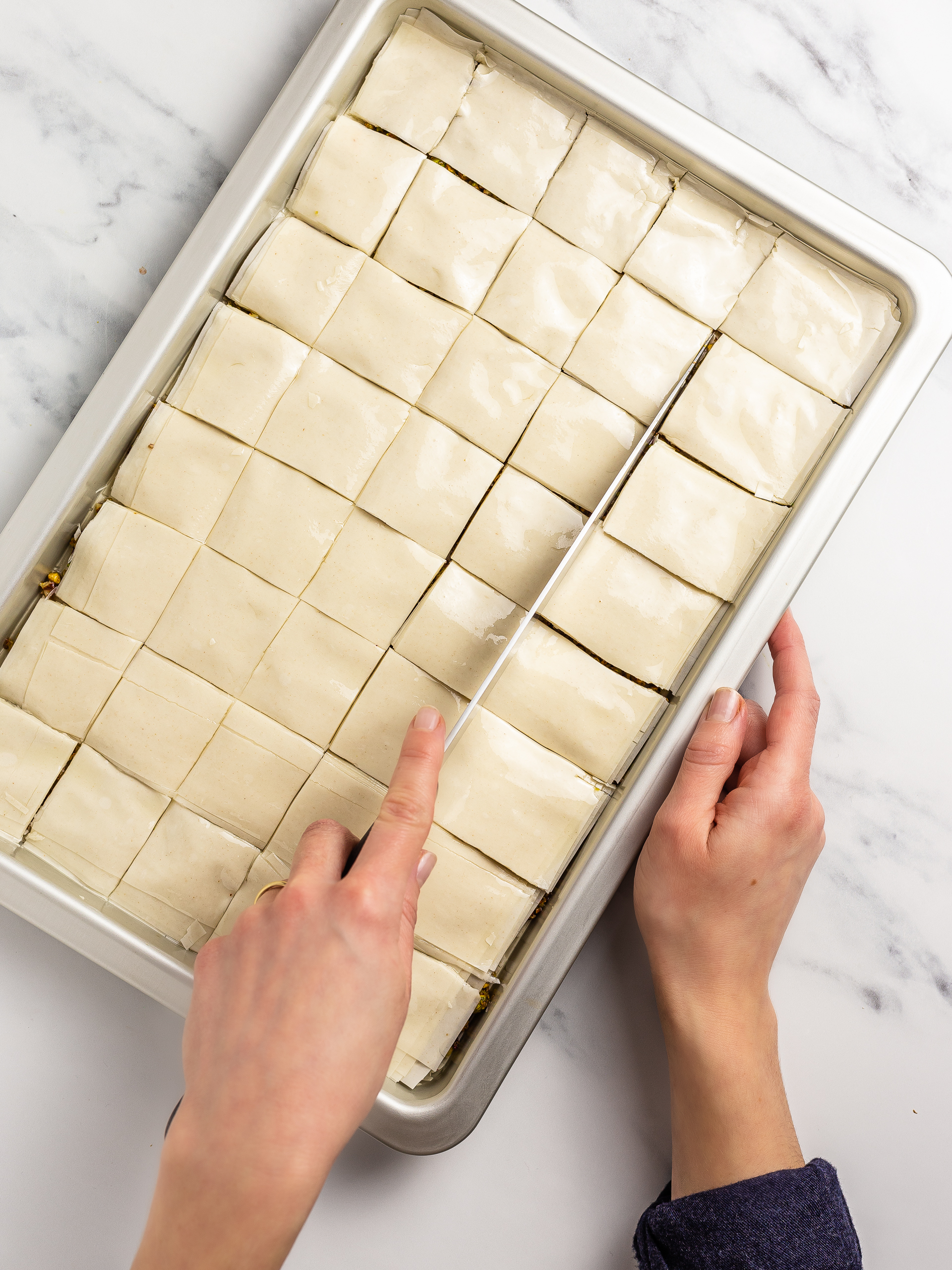
Step 5
Bake the baklava in the preheated oven at 180°C (355°F) in static mode for 20 minutes.
Then, lower the temperature to 150°C (300°F) and bake them for a further 20 minutes.
The pastry pieces should look crispy and nicely browned.
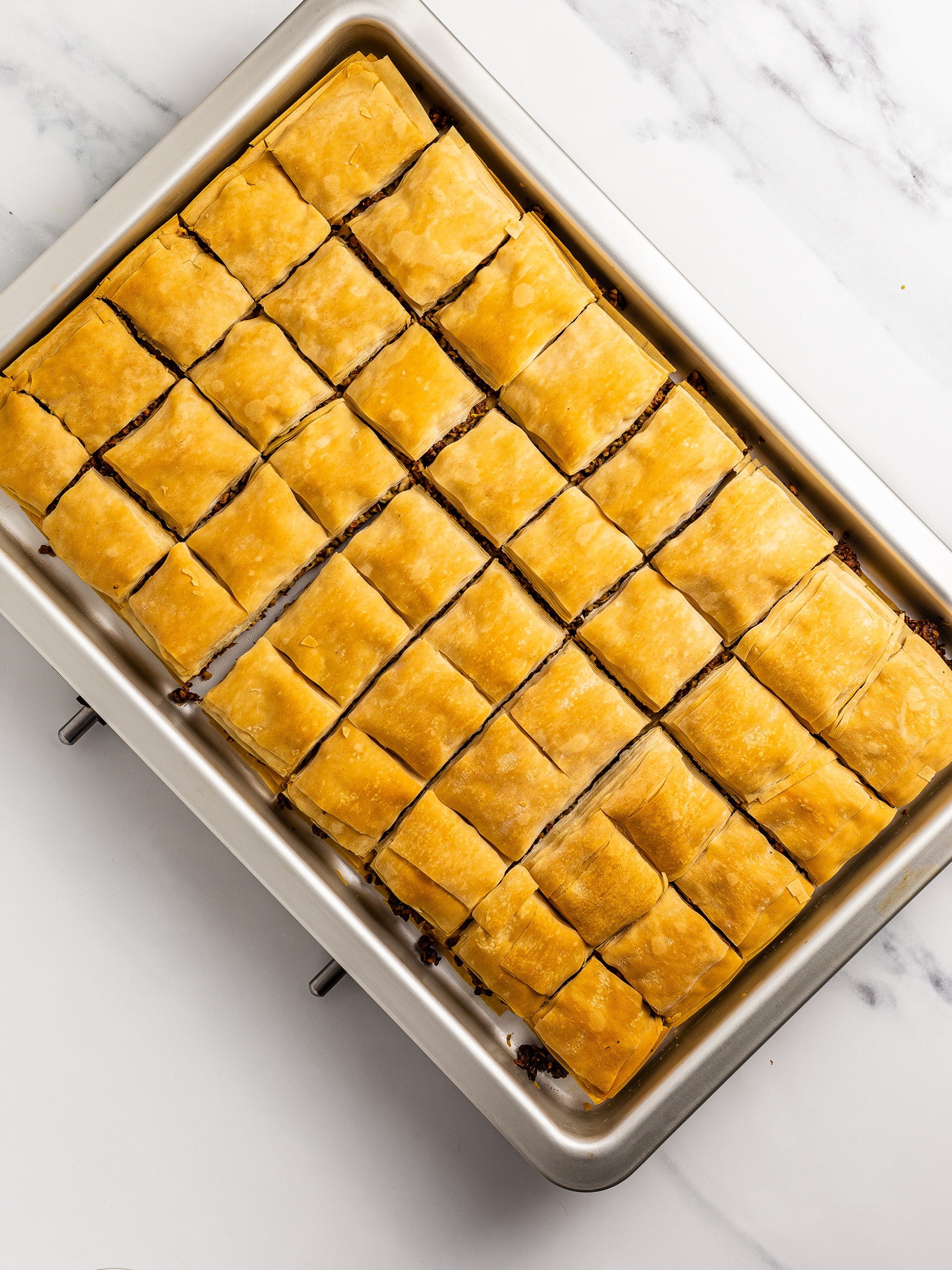
Step 6
While the pastry cooks, let's get the syrup ready.
In a bowl, combine the remaining 320 mL of maple with rose water and ground cinnamon (1). Whisk well until the cinnamon is dissolved.
Finally, pour the syrup over the warm baklava pieces and leave them to soak in (2).
Then, allow to cool down completely before serving.
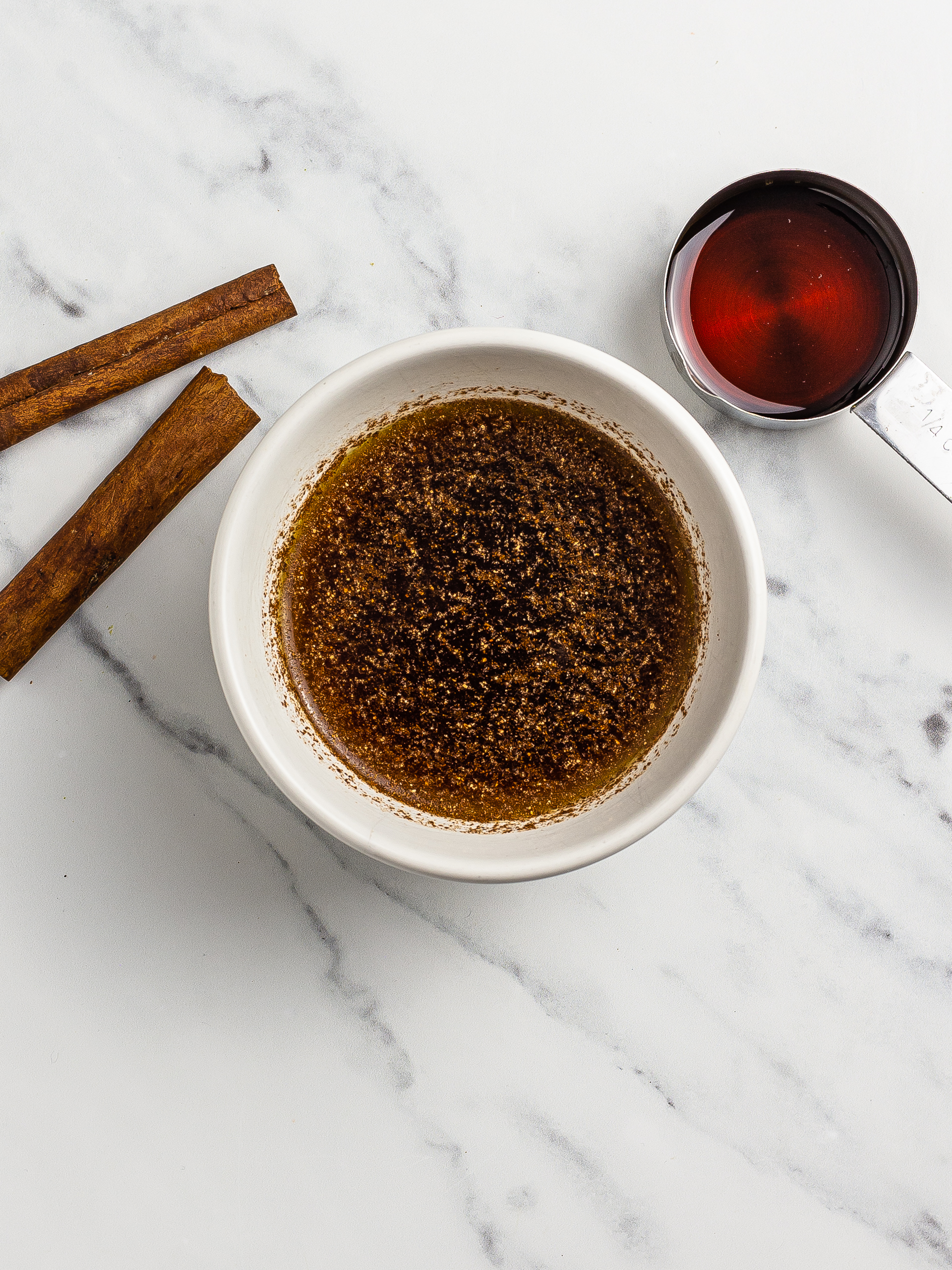
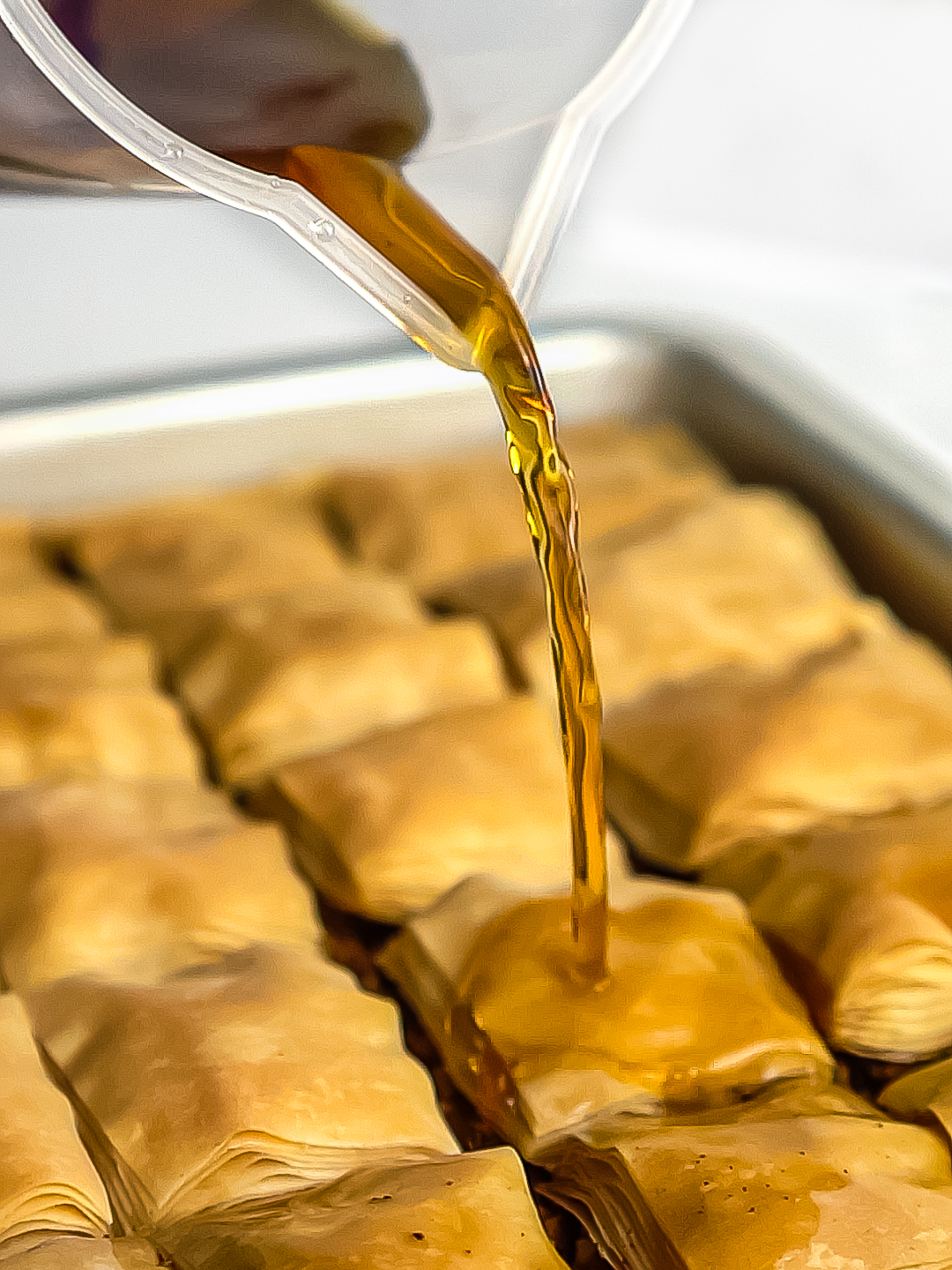
Tips
Instead of rose water, you can use orange blossom water or orange essence.
